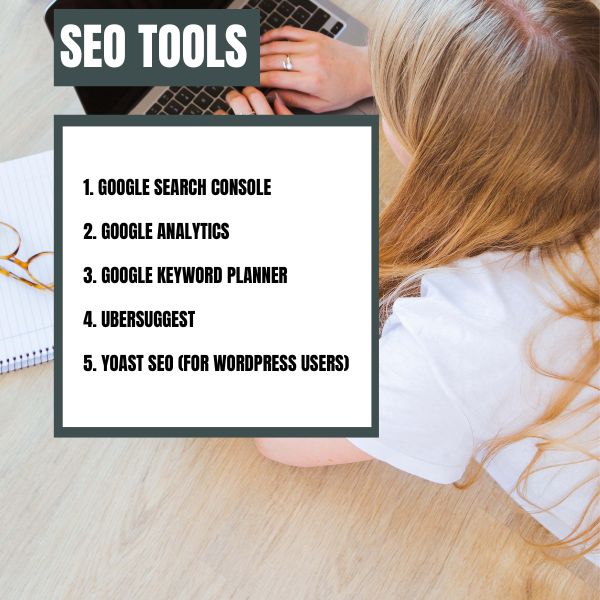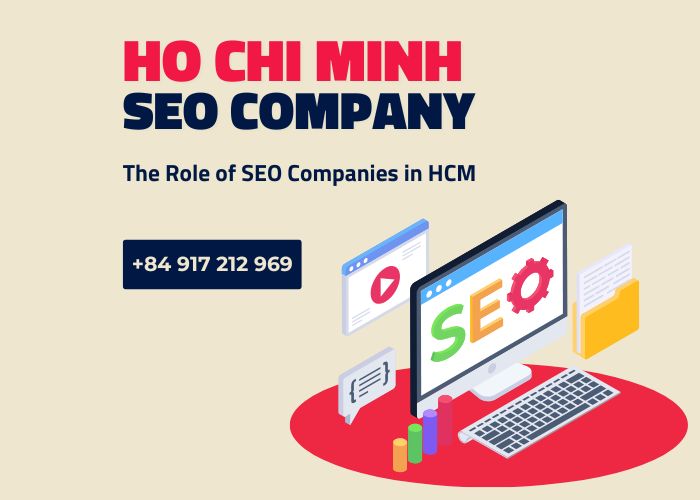SEO for SMEs & Startups in Vietnam | Viet SEO Agency
Why Small and Medium-Sized Enterprises (SMEs) Should Invest in SEO?
With so many companies competing for attention, small and medium-sized enterprises (SMEs) need a cost-effective and sustainable way to stand out. That’s where SEO comes in. Unlike paid ads on Google or Facebook—which stop delivering results the moment your budget runs out—SEO helps you build a long-term presence that continues to bring in new customers over time.
Key Benefits of SEO for SMEs
-
Cost-Effective, Sustainable Growth
Running paid ads can be useful for quick wins, but they often eat up your marketing budget very quickly. SEO, on the other hand, is more of a long-term investment. Once your website is properly optimized and starts ranking, it will keep attracting visitors around the clock—even if you’re not actively spending on ads. Viet SEO specializes in crafting customized strategies that make the most of limited budgets, helping SMEs achieve steady, long-term growth without overspending.
-
Build Credibility and Trust
People naturally trust businesses that appear at the top of Google search results. A high ranking signals that your company is established, reliable, and relevant to customer needs. With professional SEO guidance, SMEs can enhance their online reputation, encourage repeat visits, and establish themselves as trustworthy players in their industry.
-
Reach the Right Audience at the Right Time
SEO isn’t just about driving traffic—it’s about attracting the right traffic. By optimizing your website content around keywords that reflect what your customers are actually searching for, you connect directly with people who already have an interest in your products or services. This means higher-quality leads, better conversion rates, and more efficient marketing.
-
Compete with Bigger Companies
One of the biggest challenges for SMEs is competing with large corporations that have massive marketing budgets. SEO helps level the playing field. With smart, targeted strategies, even smaller businesses can outrank bigger competitors on Google for niche or local keywords. Viet SEO helps SMEs identify these opportunities, increase visibility, and effectively compete in crowded markets without needing millions in ad spend.
The Bottom Line
For SMEs and startups, SEO isn’t just an optional marketing tactic—it’s a necessity. It helps you strengthen your online presence, attract customers who are already looking for what you offer, and build a strong foundation for future growth. With the right SEO strategy, even small businesses with limited resources can grow sustainably, compete confidently, and succeed in today’s digital economy.
Key Elements of SEO for Small Business Websites – From Viet SEO’s Perspective
To succeed with SEO, small businesses need to focus on three fundamental pillars: on-page SEO, off-page SEO, and technical SEO. At Viet SEO, we guide our clients through each step so their websites are not only search-engine friendly but also optimized for real users.
a. On-Page SEO – Optimizing What’s On Your Website
On-page SEO refers to everything you can directly control within your own website. Getting these elements right ensures that both Google and your visitors clearly understand what your business offers. Key areas include:
- Keyword Optimization: Careful research and placement of keywords that align with what your audience is actually searching for.
- Title Tags & Meta Descriptions: Writing clear, engaging titles and descriptions with target keywords to boost click-through rates from search results.
- SEO-Friendly URLs: Short, descriptive, and easy-to-remember URLs that include relevant keywords.
- Page Load Speed: A fast-loading site improves user experience and helps you rank higher.
- Content Optimization: Creating valuable, in-depth, and well-structured content that addresses customer needs and questions.
- Mobile-Friendly Design: Ensuring your website is fully responsive and delivers a smooth experience on smartphones and tablets.
b. Off-Page SEO – Building Authority Beyond Your Website
Off-page SEO is about how the rest of the internet perceives your website. It strengthens your credibility and helps you earn higher rankings. Important tactics include:
- Backlink Building: Acquiring quality links from reputable and relevant websites, which act as a vote of confidence for your site.
- Content Marketing: Sharing your blog posts, infographics, and videos across social media platforms, industry forums, and niche blogs to increase exposure.
- Local SEO: Optimizing your Google Business Profile, adding accurate business information, and encouraging customer reviews to attract nearby customers.
c. Technical SEO – Building a Strong Foundation
Even the best content won’t rank well if your website isn’t technically sound. Technical SEO ensures search engines can easily crawl and index your site while providing a secure experience for users. Core elements include:
- XML Sitemap: A roadmap of your site that helps search engines understand your structure.
- robots.txt File: Controls which pages search engines should or shouldn’t crawl.
- SSL Certificate (HTTPS): Builds user trust and is also a Google ranking factor.
- Schema Markup: Adds structured data to your pages, enabling rich snippets such as star ratings, FAQs, and product details in search results.
When these three areas work together—on-page, off-page, and technical—your website becomes more discoverable, more credible, and more competitive in search rankings.
6-Step SEO Process for SMEs and Startups
Launching an SEO campaign doesn’t have to feel overwhelming. By following a structured process, small and medium-sized businesses can build a strong online presence, attract the right audience, and gradually climb the search rankings. At Viet SEO, we use a proven 6-step approach tailored to the needs of SMEs and startups:
Step 1: Audit Your Current Website (If You Have One)
Before making improvements, you need to understand your starting point. A thorough audit highlights what’s working and what needs fixing. This includes:
- Testing page load speed, since slow sites lose visitors quickly.
- Identifying technical SEO errors, such as missing meta tags, broken links, or duplicate content.
- Reviewing existing content to see if it aligns with customer needs.
- Checking which keywords your site already ranks for and spotting missed opportunities.
Step 2: Keyword Research
Keywords form the foundation of every SEO strategy. The goal is to discover what your customers are typing into Google and align your content with those searches. Key tasks include:
- Using tools like Google Keyword Planner, Ahrefs, or SEMrush to find relevant keywords.
- Targeting long-tail keywords that have lower competition but attract highly qualified leads.
- Mapping keywords to different stages of the buyer’s journey—from awareness to consideration to decision—so your content meets people where they are.
Step 3: On-Page Optimization
Once you have your keywords, it’s time to refine your website pages. Effective on-page SEO ensures search engines can easily understand your content, and users find it helpful. Best practices include:
- Structuring content with clear H1, H2, H3 headings for readability.
- Optimizing images with descriptive file names and ALT tags for accessibility and SEO value.
- Writing value-driven content that provides real solutions, instead of stuffing keywords unnaturally.
Step 4: Create High-Quality Content
Content is the fuel that drives SEO success. The more helpful and engaging your content is, the more likely people are to trust your brand and share it with others. To build authority:
- Launch a business blog focused on customer pain points, frequently asked questions, and industry insights.
- Keep content fresh and updated to stay relevant in a fast-changing market.
- Diversify your formats—use how-to guides, lists, case studies, and success stories to keep readers engaged.
Step 5: Link Building
Links from other websites act as votes of confidence, signaling to Google that your site is credible. A smart link-building strategy includes:
- Contributing guest posts to reputable industry blogs and websites.
- Participating in online communities, groups, and forums where you can share insights and link back naturally.
- Building strong internal links within your own content to help both users and search engines navigate your site better.
Step 6: Monitor and Improve
SEO is not a “set it and forget it” strategy—it requires ongoing refinement. Regular monitoring helps you identify what’s working and where adjustments are needed:
- Use Google Analytics and Search Console to track traffic, clicks, and keyword rankings.
- Monitor your position on SERPs and adjust your strategy if competitors gain ground.
- Update older content, improve underperforming pages, and double down on strategies that deliver results.
By following these six steps consistently, SMEs and startups can turn their website into a powerful marketing asset that attracts, converts, and retains customers—all without relying solely on paid ads.
Common SEO Mistakes Made by Small Businesses and Startups
When first diving into SEO, many small businesses and startups rush to “do something” without a clear strategy. Unfortunately, this often leads to mistakes that not only waste time and money but can also hold back growth. Below are some of the most frequent pitfalls we see—and how to avoid them.
1. Chasing Irrelevant High-Volume Keywords
It’s tempting to go after keywords with thousands of searches per month, thinking that more traffic means more sales. But if those keywords don’t match what you actually offer, you’ll end up with visitors who have no interest in becoming customers. For example, a local bakery targeting “best coffee beans” may attract readers but not buyers. The smarter approach is to focus on relevant, intent-driven keywords that align directly with your products or services—even if the search volume is smaller.
2. Keyword Overstuffing
Some businesses still believe that repeating a keyword dozens of times will improve rankings. In reality, keyword stuffing makes your content awkward to read and can trigger penalties from search engines. Instead, aim to naturally integrate keywords into content, using variations and synonyms while keeping the focus on providing genuine value for readers.
3. Lack of a Clear Content Plan
Publishing content randomly—without a plan—often results in inconsistency, missed opportunities, and poor performance. A content roadmap helps define what topics to cover, when to publish, and how to measure success. At Viet SEO, we encourage SMEs to think of their blog or website content as part of a long-term storytelling strategy rather than one-off posts.
4. Neglecting Content Quality
Quantity without quality can do more harm than good. Pushing out thin, generic articles just to “have something on the blog” won’t impress readers or Google. High-quality, well-researched, and engaging content not only boosts your rankings but also builds credibility and keeps visitors coming back. Establishing editorial standards—such as fact-checking, original insights, and clean formatting—ensures your content reflects your brand’s professionalism.
5. Ignoring or Mismanaging Backlinks
Backlinks are like votes of trust from other websites, but not all links are created equal. Relying on shady directories, link farms, or spammy guest posts can hurt your domain authority. A better strategy is to earn backlinks through relationships and value—for example, by contributing guest posts to reputable industry blogs, publishing original research, or partnering with local organizations.
6. Not Optimizing for Mobile Devices
With over half of web traffic coming from mobile, a website that isn’t mobile-friendly is losing out—both in users and rankings. Slow load times, tiny text, or layouts that break on smartphones often push visitors away instantly. A responsive design ensures your site adapts seamlessly to all screen sizes, improving both user experience and SEO performance.
By avoiding these common mistakes and focusing on relevance, quality, and user experience, small businesses and startups can build a stronger foundation for long-term SEO success. At Viet SEO, we help SMEs stay clear of these pitfalls and focus on strategies that actually drive growth.
Local SEO – The Secret Weapon for Small Businesses
For small businesses and startups that operate in a specific city or neighborhood, local SEO can be a game-changer. Unlike broad SEO strategies that compete nationally or globally, local SEO focuses on helping your business get discovered by people right around you—those most likely to become your customers. With Viet SEO’s expertise, SMEs can boost their local visibility, attract steady foot traffic, and build stronger ties with their community.
Key Benefits of Local SEO
- Reach Nearby Customers Faster: Appear in front of people who are actively searching for services in your area, such as “flower shop Binh Duong” or “dental clinic in District 1.”
- Build Local Trust: Showing up consistently in local searches helps reinforce credibility and creates recognition within your community.
- Capture “Near Me” Searches: With the rise of mobile usage, location-based searches like “coffee shop near me” have become incredibly common—and local SEO ensures you’re part of those results.
How to Do Local SEO Effectively
- Optimize Your Google Business Profile (formerly GMB): Make sure your listing includes accurate business details—name, address, phone number, website, opening hours, and engaging photos.
- Encourage Customer Reviews: Positive reviews not only build trust with potential customers but also signal to Google that your business is reliable and relevant.
- Feature Your Address on Your Website: Adding your business address and contact information in the footer or contact page strengthens local signals for search engines.
- Create Location-Specific Content: Publish pages or blog posts tailored to your city or district, such as “SEO services for startups in Ho Chi Minh City” or “Best digital marketing tips for SMEs in Hanoi.”
For small businesses with physical locations, local SEO is more than just an add-on—it’s a secret weapon for standing out in competitive markets. By combining accurate business listings, strong customer reviews, and locally relevant content, SMEs can dominate local search results and attract more nearby customers.
Free SEO Tools for Small Businesses
One of the biggest misconceptions about SEO is that it requires a huge budget to get started. In reality, there are plenty of free tools that small businesses can use to monitor performance, discover opportunities, and optimize their websites for better rankings. Here are some of the most useful tools, along with how they can support your SEO journey.
1. Google Search Console
This is a must-have for any website owner. Google Search Console shows you how your site performs in search results, which keywords you’re ranking for, and whether Google has any trouble indexing your pages. By checking it regularly, you can fix errors, track improvements, and uncover new ranking opportunities.
2. Google Analytics
While Search Console focuses on how your site performs in search, Google Analytics tells you what visitors do once they arrive. You can see where your traffic is coming from, which pages people spend the most time on, and where they drop off. This insight helps you understand user behavior and refine your content strategy to drive more conversions.
3. Google Keyword Planner
Originally designed for advertisers, Keyword Planner is also a fantastic SEO tool. It helps you discover keyword ideas, check search volumes, and explore related terms. For small businesses, it’s especially useful for finding long-tail keywords—phrases that are less competitive but highly relevant to your target audience.
4. Ubersuggest
Ubersuggest combines several SEO features in one simple tool. You can research keyword ideas, analyze competitors, and even check backlink opportunities. For SMEs with limited resources, it provides a cost-free way to spot trends and shape content strategies without needing advanced paid platforms.
5. Yoast SEO (for WordPress Users)
If your website runs on WordPress, Yoast SEO is an essential plugin. It makes on-page optimization easy by helping you craft SEO-friendly titles and meta descriptions, check keyword placement, and improve overall readability. Even beginners can use it to make sure their content is properly structured for search engines.
How Viet SEO Can Help
While these free tools provide a strong foundation, using them effectively requires more than just collecting data. The real value lies in understanding what the numbers mean and how to act on them. That’s where Viet SEO comes in. Our team helps small businesses interpret insights, avoid common mistakes, and turn these tools into powerful drivers of growth. By combining free resources with expert guidance, SMEs can maximize their results and achieve sustainable success online.
SEO Is a Long-Term Investment for Small Businesses
For small businesses and startups, SEO should never be seen as a quick fix. Unlike paid ads that deliver instant traffic but disappear the moment your budget runs out, SEO is a long-term investment. It requires patience, strategy, and consistent effort—but the payoff is worth it. A well-executed SEO strategy helps reduce dependency on costly advertising, builds brand authority, and drives steady growth that compounds over time.
Action Plan Recap for SMEs and Startups:
- Begin with a thorough analysis and keyword research to understand your market and customer intent.
- Develop high-quality, useful content while optimizing on-page elements like titles, meta descriptions, and site speed.
- Build backlinks and strengthen your Local SEO presence to boost credibility and connect with nearby customers.
- Monitor performance and improve continuously—SEO is not set-and-forget. Consistency is the key to long-lasting results.
If you’re a small business owner or just starting a new venture, remember: even small, gradual steps in SEO add up over time. SEO isn’t magic, but it is one of the most reliable and cost-effective ways to build sustainable success in today’s digital marketplace.




